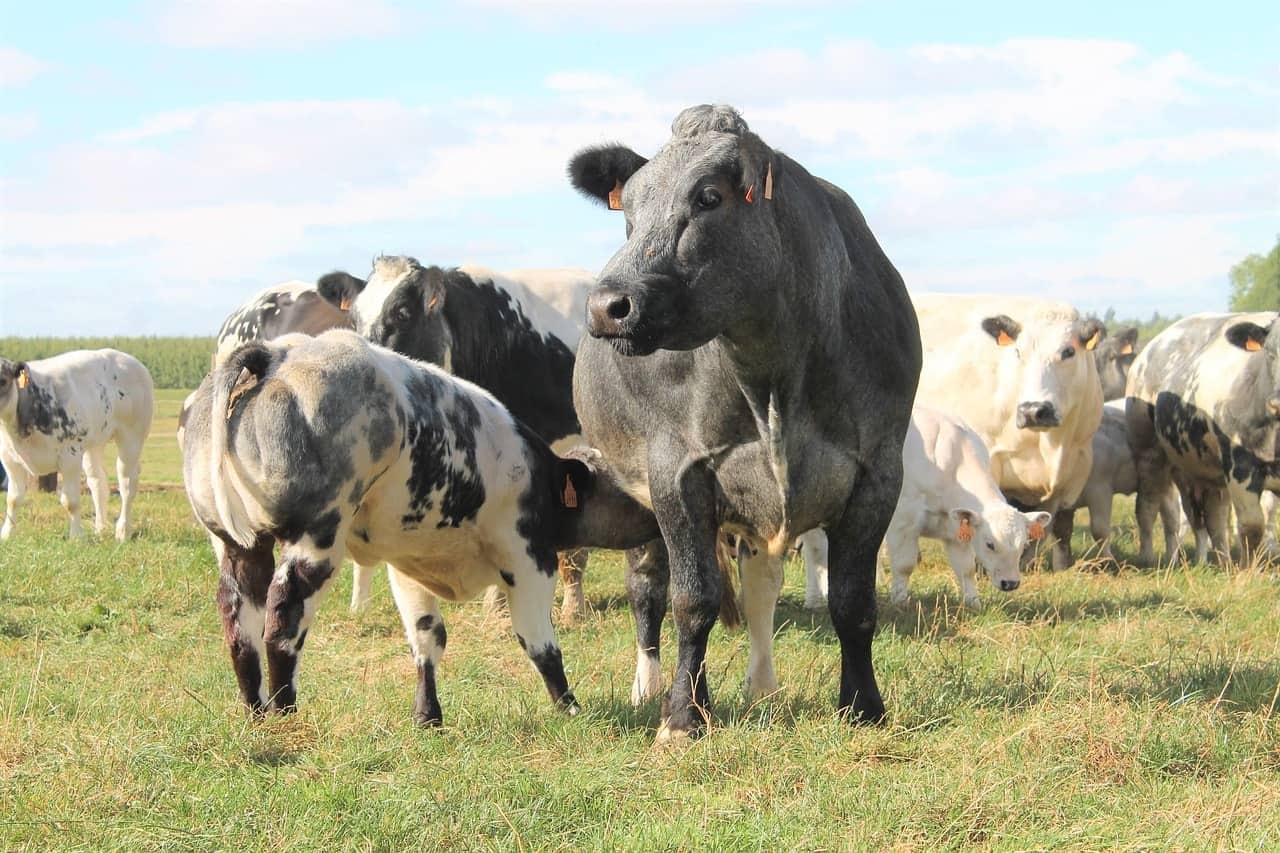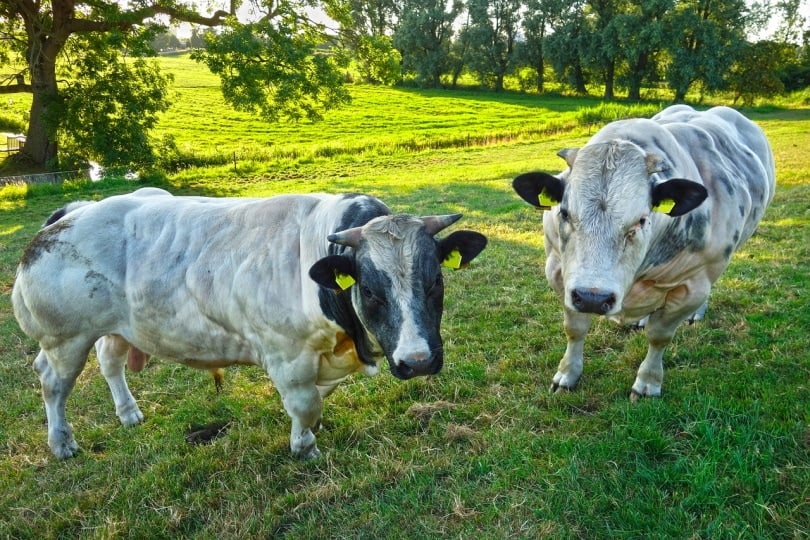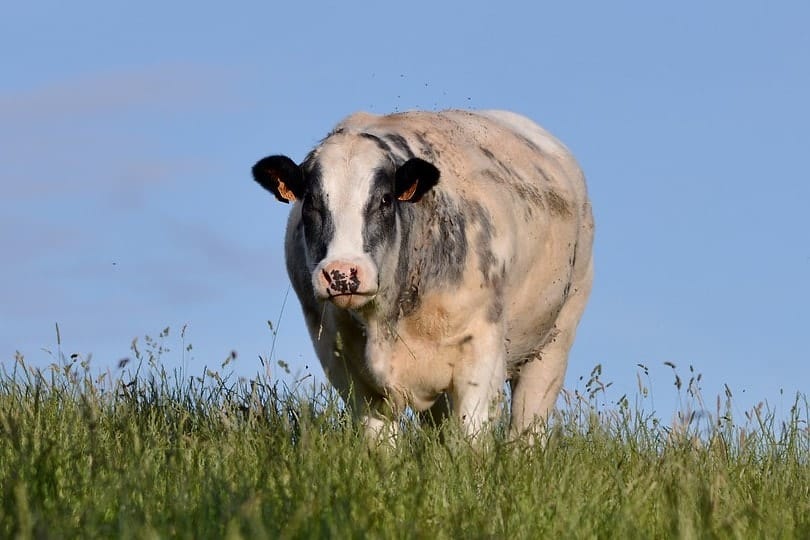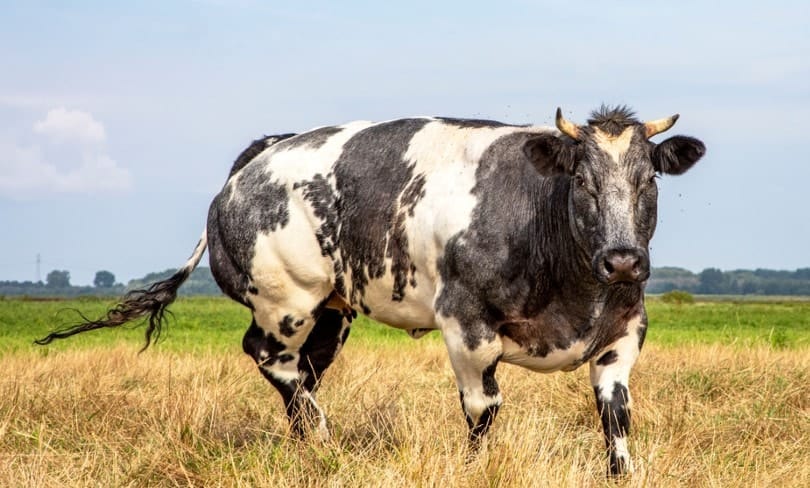When you’re looking to add some cattle to your farm, you know that there are tons of different choices out there. If you’re specifically looking to raise your cattle for meat, one breed that you need to check out is the Belgian Blue Cattle.
They’re outstanding meat producers, though that doesn’t mean they’re the perfect cattle choice for you. That’s why we developed this comprehensive guide: to walk you through everything that you need to know about these massive animals.

Quick Facts About Belgian Blue Cattle

| Breed Name: | Race de la Moyenne et Haute Belgique |
| Place of Origin: | Belgium |
| Uses: | Meat production |
| Bull (Male) Size: | 2,700 pounds |
| Cow (Female) Size: | 1,700 pounds |
| Color: | White, blue-white, or gray (white base) |
| Lifespan: | 20 years |
| Climate Tolerance: | Medium |
| Care Level: | High |
| Production: | 20% higher than typical cattle |
Belgian Blue Cattle Origins
As the name suggests, the Belgian Blue Cattle originated in Belgium. These are crossbred, double-muscled cattle that first came into existence in the 1950s. This makes it one of the newer cattle varieties out there, and it only gained widespread notoriety in the last 50 to 60 years.
Professor Hanset developed the first Belgian Blue cow through artificial insemination, and once farmers noted the unique characteristics of the offspring, Belgian Blue Cattle populations quickly took root.
Belgian Blue Cattle Characteristics
The most notable reason that the Belgian Blue Cattle has become so popular in recent years is their double-muscle characteristic. It leads to roughly 20% more meat production, which makes them some of the more profitable meat cattle out there.
However, this type of hybrid cattle also has a few struggles with traditional rearing, so keep in mind if you’re breeding them that a C-section might be necessary. This is in large part because newborn Belgian Blue Calves are significantly heavier and larger than most other calves.
But as another perk for rearing them for meat consumption, the Belgian Blue Cattle has a lower feed conversion ratio than many other cattle. This means you get more profits for less money in feed costs!
Finally, while these might be high-yield meat-producing cattle, due to the lower fat content, their meat isn’t as tender or as high-value as some other cattle varieties.

Uses
While cattle generally have two purposes, milk production and meat, the Belgian Blue Cattle is used almost exclusively as a meat production cattle. This means if you’re raising them, you’re likely raising them for slaughter to maximize your profit margin.
Compounding the issue is that Belgian Blue Cattle can be difficult to milk, so if you’re looking for a dairy cow, there are better options out there.
Appearance & Varieties
While they have “blue” in the name, the Belgian Blue Cattle doesn’t always have a blue appearance. Belgian Blue Cattle have a white base, and on that base, they can have bluish-gray spots that give them their “blue” name.
However, some Belgian Blue Cattle don’t have those signature gray-blue spots; sometimes, they’ll be all white or have gray spots without any blue.
So, if you’re rolling by a farm looking for blue cattle, there’s a good chance that you’ll be disappointed even if you happen to track down a Belgian Blue cow near you.
Population/Distribution/Habitat
Compared to many other cattle varieties, the Belgian Blue Cattle isn’t as prominent as other breeds. There are a little over 100,000 registered Belgian Blue Cattle out there, and almost all of them are bred exclusively for meat production.
You can find Belgian Blue Cattle throughout Europe, but they’re also prevalent in some Canadian and North American farms.

Are Belgian Blue Cattle Good for Small-Scale Farming?
If you’re looking to bring a Belgian Blue Cattle onto your small-scale farm, there are two things that you need to be aware of. First, they’re massive in size, so they need a ton of space. Second, if you’re looking to breed them to keep a continuous stock, they’re not easy cattle to do this with.
However, if you have a large area for them and aren’t planning on breeding them, they have a mild temperament that makes them a good choice for small-scale farming.

Final Thoughts
When you’re raising cattle, there’s a ton to consider, as they’re not a small investment. So, before you bring a calf home, ensure that you know what you’re getting yourself into and that you can meet all their care requirements.
Still, if you’re serious about raising cattle for meat production, you could do far worse than the high-producing Belgian Blue Cattle.
Featured Image Credit: Clara Bastian, Shutterstock
